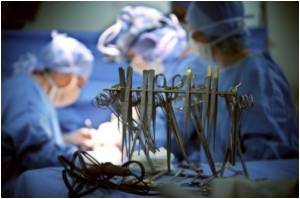Existing rehabilitation used for people undergoing tendon-bone repairs like rotator cuff repair perhaps partially to blame for the high rates of failed healing post surgery suggests study.

Carolyn Hettrich, M.D., MPH, who was an HSS resident when she conducted the study, will present the study July 14 at the annual meeting of the American Orthopaedic Society for Sports Medicine (AOSSM), held in Baltimore.
The rotator cuff is a set of a four small muscles in the shoulder that allow the upper arm to rotate. When a rotator cuff is torn, the tendon part of the muscle tears away from the bone of the upper arm. During a repair surgery, a surgeon reattaches the tendon to the bone and a surgery''s success is dependent on how well the interface between the tendon and bone heals. Studies have shown that 20%-40% of patients undergoing rotator cuff surgery have failed healing. These patients have poorer outcomes, including decreased strength and decreased range of motion.
Rehabilitation after rotator cuff surgery usually consists of immobilizing the shoulder in a sling for seven to ten days, physical therapy with passive and assisted motion for six weeks, followed by physical therapy with active motion for six weeks. However, there is little data on the optimum rehabilitation program, and clinicians recognize there is a delicate balance between minimizing movement after surgery to protect the repair and allowing movement to prevent joint stiffness.
To explore the timing of post-operative rehabilitation, investigators at HSS conducted experiments using a rat model of patellar tendon injury and repair. The investigators used a small metal frame to hold the joint in place and then used a specially designed motorized device to precisely apply loads of strain. One group of rats received a low load 50 times per day (analogous to a leg extension with no weight), another group received a moderate load 50 times per day and a third group had their joint immobilized for the entire study period. The animals were studied at 4, 10, 21, and 28 days.
The researchers found that rats that had their joint immobilized had the best healing with significantly less fibrocartilage or scar tissue than rats in the other two groups. Scar tissue is weaker than original tissue, and oftentimes scar tissue forms at the interface between bone and tendon during tendon repair surgery. The rats that were immobilized also had better connective tissue organization, higher load to failure, better bone mineral density, and fewer dead cells in the area that was operated on. During the healing and inflammatory process, there is a regeneration and remodeling of tissues, which sometimes involves cell death that can lead to inflammation.
Advertisement
The investigators suggest that the best path to recovery for patients undergoing rotator cuff surgery might be to keep individuals in slings for six weeks and then start with passive motion therapy. However, studies are needed in humans to test this hypothesis and make firm clinical recommendations.
Advertisement
Other HSS investigators involved in the study include Patrick Birmingham, M.D., Xiang-Hua Deng, M.D., Selom Gasinu, Brandon Beamer, Mark Stasiak, Alice Fox, MSC, and Olivia Ying.
About Hospital for Special Surgery
Founded in 1863, Hospital for Special Surgery (HSS) is a world leader in orthopedics, rheumatology and rehabilitation. HSS is nationally ranked No. 1 in orthopedics, No. 2 in rheumatology, No. 19 in neurology and No. 16 in geriatrics by U.S. News & World Report (2012-13), and is the first hospital in New York State to receive Magnet Recognition for Excellence in Nursing Service from the American Nurses Credentialing Center three consecutive times. HSS has one of the lowest infection rates in the country. From 2007 to 2011, HSS has been a recipient of the HealthGrades Joint Replacement Excellence Award. HSS is a member of the NewYork-Presbyterian Healthcare System and an affiliate of Weill Cornell Medical College and as such all Hospital for Special Surgery medical staff are faculty of Weill Cornell. The hospital''s research division is internationally recognized as a leader in the investigation of musculoskeletal and autoimmune diseases. Hospital for Special Surgery is located in New York City and online at www.hss.edu.
Source-Newswise











